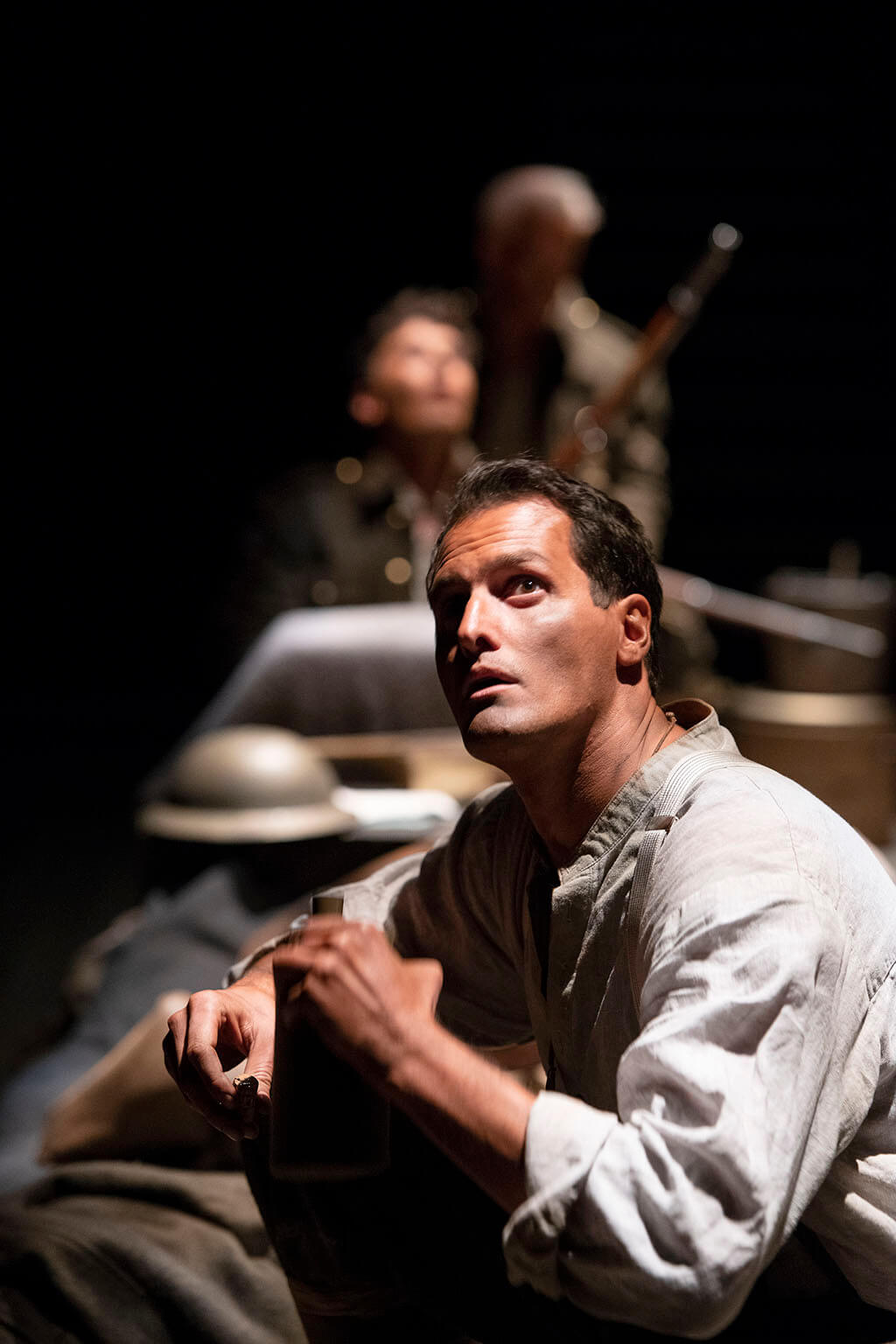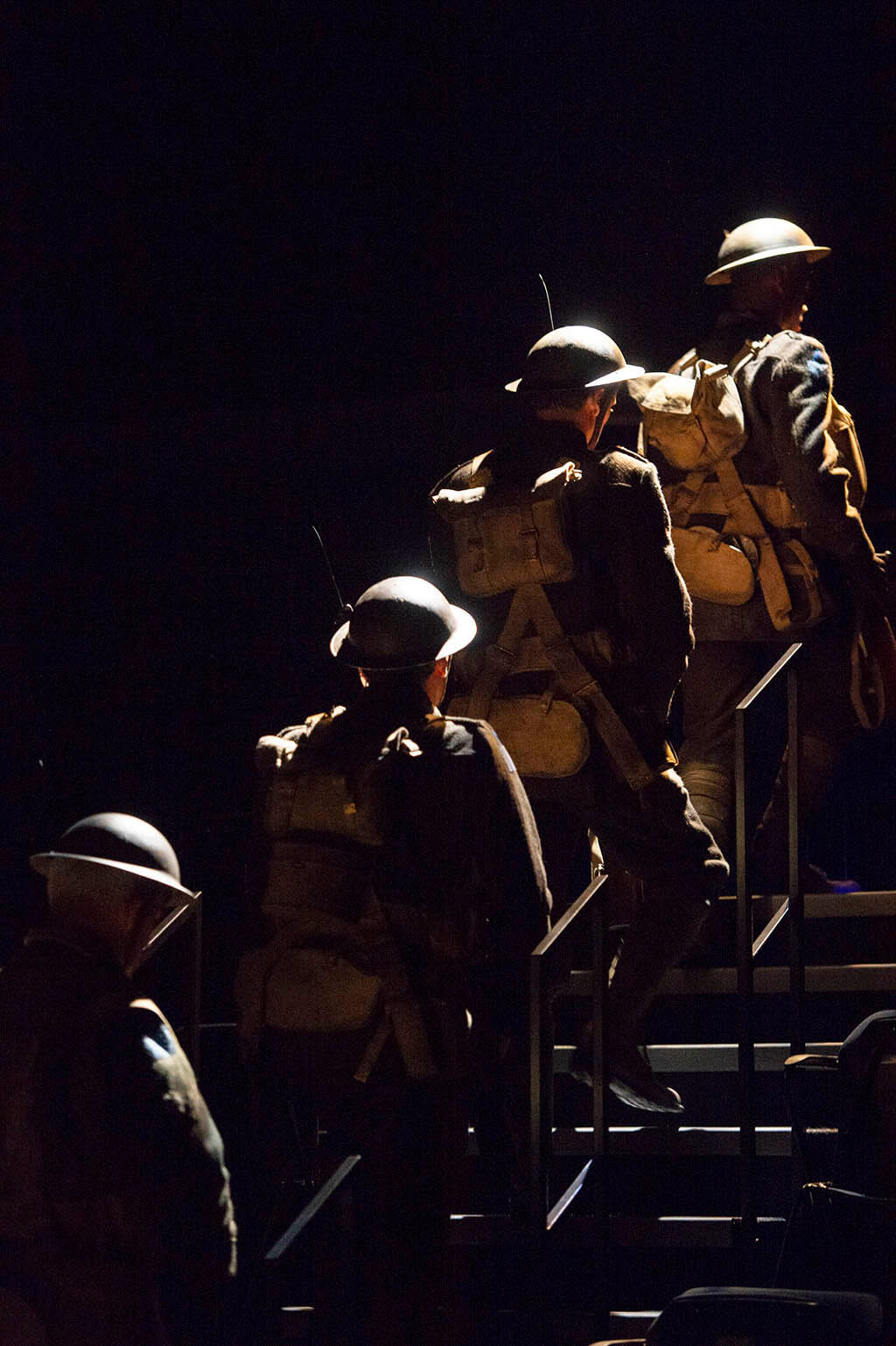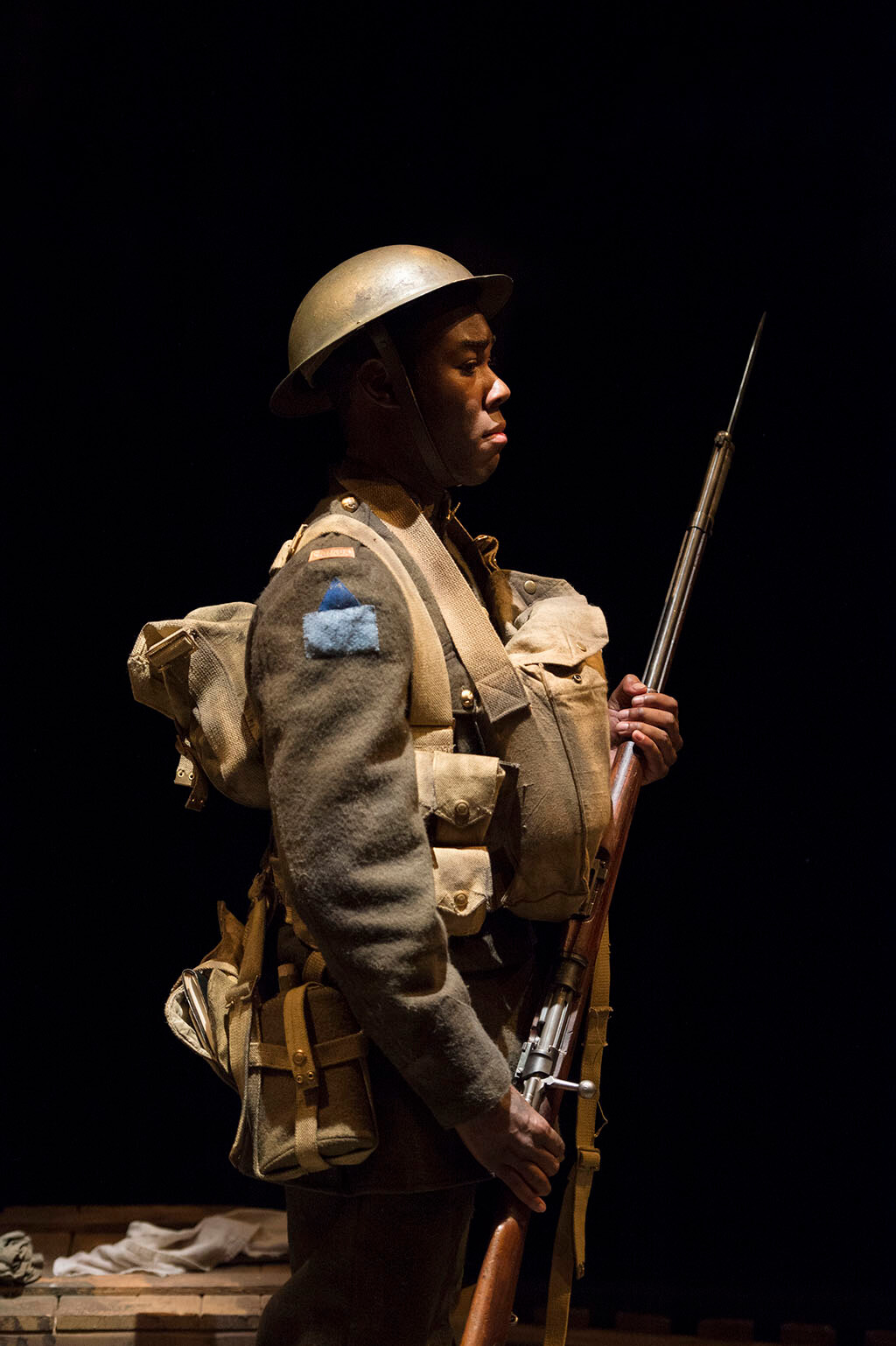
Shaw Festival 2018/ Henry V by William Shakespeare, directed by Kevin Bennett and Tim Carroll, Studio Theatre, July 22 to Oct. 28. Tickets available at 1-800-511-7429 or www.shawfest.com
A mini-theme at the Shaw Festival this season is the commemoration of the centenary of the end of World War I (1914-1918). The plays include Shaw’s O’Flaherty V.C., Oh What A Lovey War by Joan Littlewood, Theatre Workshop and Charles Chilton, and, of all things, Shakespeare’s Henry V. This is the first time in the history of the festival that Shakespeare has been on the boards, so it is a big deal. And the verdict? The production is a qualified success.
Co-directors Kevin Bennett and Tim Carroll have set the play in a dugout in the trenches in 1918. A group of Canadian soldiers is waiting for the start of battle, and to occupy themselves, they are rehearsing Henry V, which, apparently, they will be performing in a week. The program notes tell us that mounting productions in war was not uncommon, and, in fact, there were many military theatre companies in operation. Camellia Koo’s clever set design confines the seven men to a narrow strip of linoleum impeded by their kits. There is hardly enough room to swing the proverbial cat. The first act ends as the whistle sounds to call the men over the top, and they mount the stairs to the Studio Theatre’s back row. The second act is set in a hospital ward. It has clearly been a disastrous battle. The four nurses take on roles from the play along with the soldiers. Acting out Henry V has now become a sort of therapy.
The concept of the production is a grand vision on the part of directors Bennett and Carroll. Shakespeare intended Henry V to be pure patriotic propaganda, and what better way to foster it than the retelling of the successful English invasion of France and victorious battle of Agincourt. In Shakespeare’s time, the country was beset by enemies, and the home front needed encouragement. The language is crammed with morale boosters. “Follow your spirit: and upon this charge, Cry — God for Harry! England and Saint George!” and “Once more unto the breach, dear friends, once more; Or close the wall up with our English dead!” As the soldiers rehearse, the directors have added in lines reflecting the men’s commentary about the play itself. Another layer to the theatrical fabric is that the audience members have their own reaction to both the soldiers’ reaction, and to the actual Shakespeare play. Then add into the mix that Canada is involved in a European war that really has nothing to do with us, and we’re in France only because of our colonial connection to the Mother Country. World War I was a human calamity. Thousands upon thousands of men died to gain one yard. Thus, this multi-interaction between Shakespeare, the soldiers and the audience gives a fresh take on the Bard’s words. It is irony writ large.

In truth, however, I wanted more insight from the soldiers’ conversations about the play. For example, we may see the irony of their situation, but they don’t seem to articulate it. They never really examine character. The text is taken at face value. For me, the directors came up short on this aspect, which was one of their main intentions in staging Henry V as a play within a play. Where they have struck gold, however, is in defining seven different personalities. For example, Damien Atkins is the troop’s extrovert and live wire, while Graeme Somerville as the officer, has reserve and command. Cameron Grant is the callow, enthusiastic youth, while Patrick Galligan is the wise old man. Kristopher Bowman is the quiet, watchful one, while Ric Reid is the crusty, experienced sergeant. (For Gray Powell as Henry V, see the next paragraph.) The camaraderie is real – their joking, their teasing, as well as their fits of annoyance with each other. These soldiers truly are Henry V’s “band of brothers”. It is also very amusing to watch seven soldiers play 45 characters, although kudos to the directors for their judicious cuts to the text that permit continuity of action without weighty verbiage.
In his 12 years with the festival, Powell has rarely, if ever, put a foot wrong. It was not a surprise that he was cast as Henry V because he is the Shaw’s preeminent leading man. Powell’s performance here, however, is disappointing, particularly in speech delivery. His cadence is staccato with weird pauses in the middle of lines. His voice is often a monotone with a limited emotional range. Even a fail-proof rousing speech like “Once more unto the breach” falls flat. The actor has the charisma for the role, but his actual saying of the lines is bland. This shortcoming is certainly a mystery. Henry’s actual character, however, is interesting. Of the seven men, Powell is the detached one, but then, Henry is distanced from the others because he is a king. While his comrades seem engaged in the rehearsal, he plays cat’s cradle with a string. It is a perfectly suitable interpretation. Powell, however, does manage to execute a sublime moment near the end of the play. When Henry kisses his future bride (nurse Natasha Mumba), the actor is overwhelmed by the intimacy. In one fell swoop, he captures a man who has been reminded of the more gentle things that exist outside of war, and his complete shock and loss of composure is brilliant and poignant. This is Powell the actor that we know and love.

With the arrival of the nurses (Yanna McIntosh, Julia Course, Claire Jullien and Mumba), we get women playing the female roles as well as male ones. We also get the feminist subtext on the nature of war, for example, just by the subtle way the women say some of the more bellicose lines from the text. Their characters are not that well defined, although McIntosh is clearly the head sister. Nonetheless, all four show flashes of personality, and none of them is blancmange.
In contrast to the first act which finds the men relaxed and in good spirits, the second act is a working hospital ward. Dressings are changed, bandages rolled, bodies are washed. McIntosh even serves hot soup. In fact, the directors deserve congratulations for the very natural and realistic atmosphere each act conveys. As Shakespeare’s text continues to mount in nationalistic rhetoric, the contrast is stark. In front of us are damaged men whose injuries range from the walking wounded to the comatose. The directors’ vision has moved from the trenches to hospital beds, and terrible things happen in the second act that produce gasps from the audience.
The last lines of the play take on a special pathos, particularly because of where they are recited. In the darkened ward with the men all put to bed, Somerville as the Chorus reminds us of the chaos that followed the glory days of Henry V. “That they lost France and made his England bleed: Which oft our stage hath shown; and, for their sake, In your fair minds let this acceptance take.”
And two final notes. The actors certainly had little difficulty in negotiating Shakespeare’s speech. After all, the Shaw Festival actors need classical training to toss off Shaw, not to mention Oscar Wilde and Noel Coward.
As well, audience members are invited to write down instances where they have been touched by war. Pens and paper are provided outside the theatre doors. At the beginning of Act Two, as the nurses wheel on the patients in their hospital beds, Ric Reid, in full sergeant dress uniform, reads the cards. One can’t help but be moved.
- INTERVIEW | Actor Diego Matamoros Takes On Icon Walt Disney In Soulpepper Production Of Hnath Play - April 16, 2024
- SCRUTINY | Opera In Concert Shine A Light On Verdi’s Seldom Heard La Battaglia Di Legnano - April 9, 2024
- SCRUTINY | Lepage & Côté’s Hamlet Dazzles With Dance And Stagecraft Without Saying Anything New - April 5, 2024



